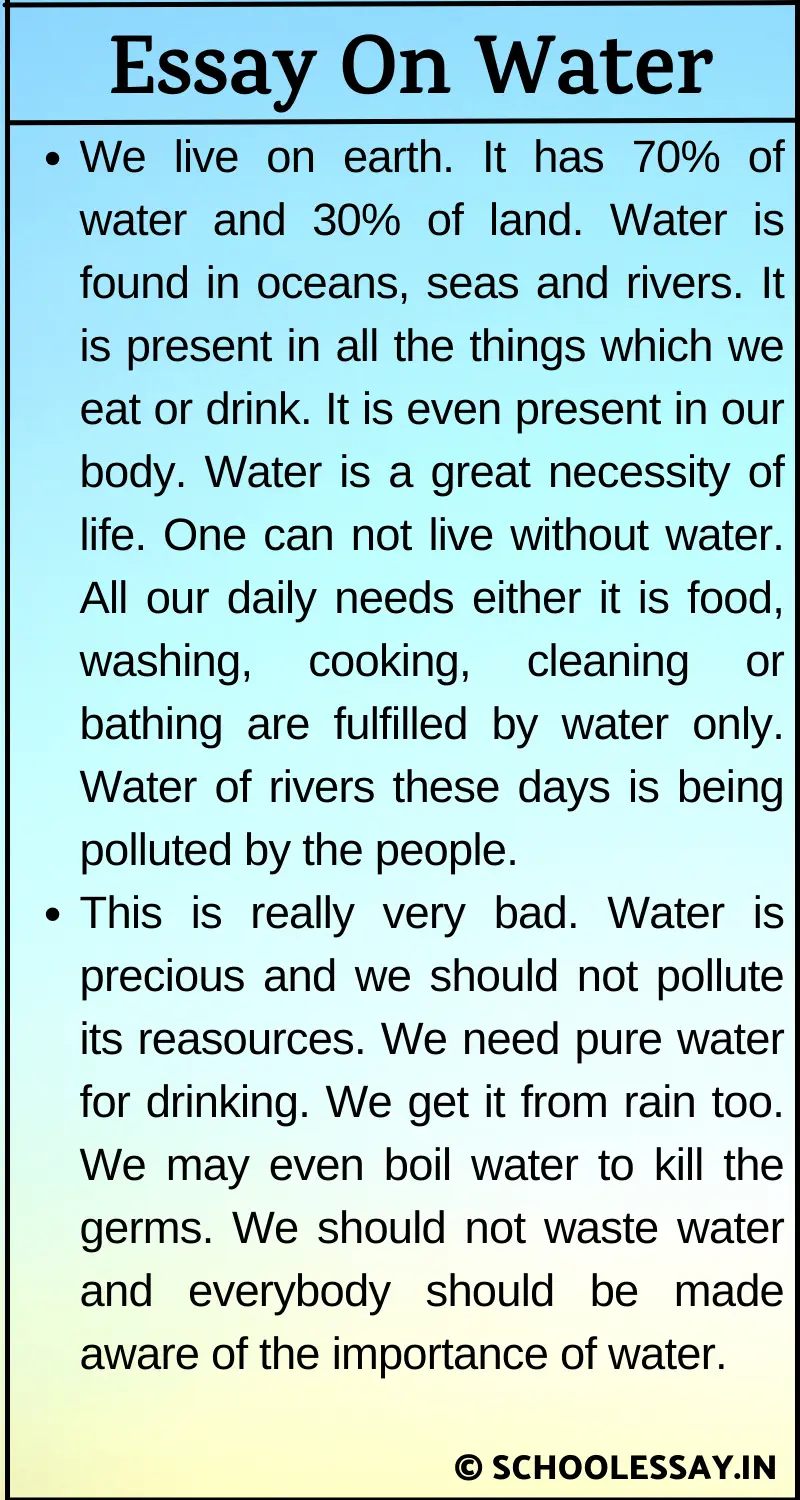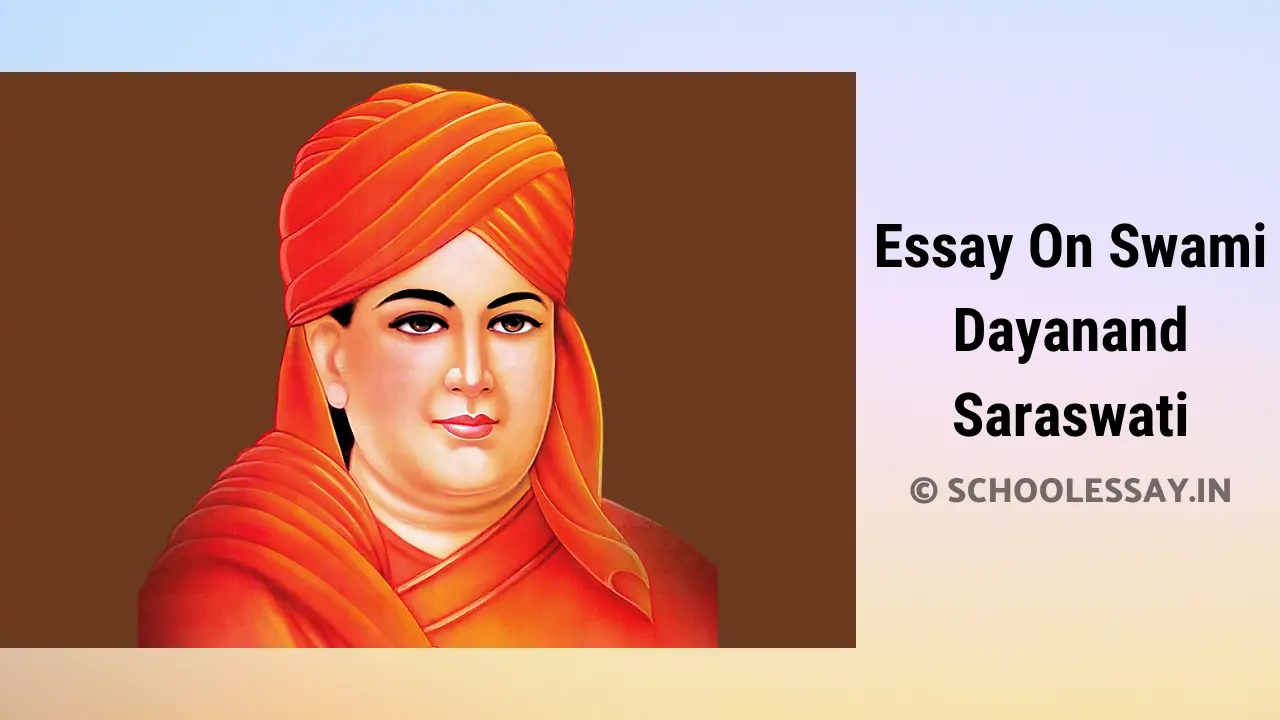Set 1: Essay On Water
We live on earth. It has 70% of water and 30% of land. Water is found in oceans, seas and rivers. It is present in all the things which we eat or drink. It is even present in our body. Water is a great necessity of life. One can not live without water. All our daily needs either it is food, washing, cooking, cleaning or bathing are fulfilled by water only. Water of rivers these days is being polluted by the people.
This is really very bad. Water is precious and we should not pollute its reasources. We need pure water for drinking. We get it from rain too. We may even boil water to kill the germs. We should not waste water and everybody should be made aware of the importance of water.
The problem in India is that land features change every few kilometres and, therefore, there can be no uniform or standing national water policy which can be put into practice properly unless it takes into account the elaborate terrestrial conditions of the terrain in its diversity which is too large and whopping.

Set 2: Essay On Water And People
Then we have local variation depending on soil, crops sown and the mode of irrigation. The result is that whereas there may be an acute paucity of water in one area another one, not quite far away, may be suffering from the acute problem of water logging.
In certain states, as during the Green Revolution in Punjab, the underground water has been tapped to criminal excess, thus lowering the level to an alarming extent. This local variation can be gauged from the situation prevailing in Punjab and Haryana. In Punjab, whereas in several areas there is scarcity of water, in the districts of Ferozepur and Bhatinda there is the problem of water-logging to and water there is brackish and unfit for human consumption.
In Haryana most of southern and central districts have light, loamy soils. Such soils have Labua a higher capacity for water retention. The result is rising water tables, poor drainage, waterlogging and high soil salinity. The reverse is the case in the northern districts. In these districts, the soil is heavier. Such a soil cannot retain water for long. The result is falling water tables and soil-compacting.
There are certain steps which can easily be taken. For example Roof top water can be tapped during the rainy season. The Union Minister for Urban Development, indicated sometime back that the roof-top water harvesting would be incorporated in building by laws.
It is reported that the Human Settlement Technology for the conservation of rainwater has been finalised by the Indian Institute of Technology.
The farmers may be asked to change the cropping pattern by giving more emphasis on crops like sunflower which require less water. Many of the tube-wells in certain areas are built in wells which lie at the field level. During the rainy season, often much of the water just goes down the drain.
The farmers build temporary walls around the tube-wells to prevent the water from flooding the wells which are sometimes covered. The farmers can be asked to keep the wells uncovered and unwalled during the rainy season to let the rain water flow freely into their wells. This can raise the water table of ground water to some extent.
Sometime back, it was suggested by a retired chief engineer from a state that deep bores at 100 PATIKON certain places should be made into the soil during the rainy season to let the freely-flowing rain water seep into the soil.
In areas where water-logging is a problem, channels should be built to carry water to the areas of scarcity. Such channels should preferably be covered to ‘prevent the water from evaporating.
ALSO READ:
- Essay On Yoga
- Essay On Urban Life
- Essay On Visiting Children’s Home
- Essay On Value Of Games And Sports
- Essay On Veteran Comedian – Charlie Chaplin
- Essay On Volcano facts
- Essay On Value of Good Health
- Essay On Vocational Education of The Day-The Need
- Essay On United Nations Organisation
- Essay On Unity Is Strength



